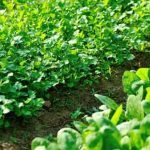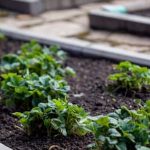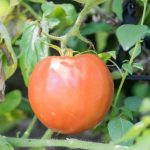Are you a beginner or seasoned vegetable gardener looking for a comprehensive guide to help you through the growing season? Look no further than the Week by Week Vegetable Gardener’s Handbook. This handbook provides a detailed, week-by-week approach to planning, planting, and caring for your vegetable garden, ensuring that you get the most out of your harvest.
When it comes to creating a successful vegetable garden, one of the first steps is choosing the right location. Factors such as sunlight, water access, and soil quality all play a crucial role in determining where to set up your garden. The Week by Week Vegetable Gardener’s Handbook offers valuable insights into selecting the best location for your garden and optimizing its potential for growth.
After choosing a suitable location, the next step is selecting which vegetables to grow. Whether you have limited space or want to focus on specific crops, this handbook provides guidance on which vegetables are best suited for your garden and how to maximize their growth potential. With practical tips and advice tailored to each stage of the growing season, this handbook is an invaluable resource for any vegetable gardener looking to cultivate their own fresh produce.
Choosing the Right Location for Your Vegetable Garden
The success of your vegetable garden largely depends on choosing the right location for it. Most vegetables require at least 6 hours of direct sunlight each day, so it is crucial to select a spot in your yard that receives adequate sunlight. Take note of any large trees or structures that may cast shadows, as this can affect the amount of sunlight reaching your garden.
In addition to sunlight, it’s important to consider the accessibility of water. Vegetables need consistent moisture, so ensure that your chosen location is within reach of a water source. Consider installing a drip irrigation system if you anticipate challenges with regular watering.
Another factor to take into account when choosing a location for your vegetable garden is the quality of the soil. Conduct a soil test to determine its pH and nutrient levels. This will help you determine if any amendments are needed before planting. If possible, choose an area with well-draining soil to prevent waterlogging.
One final consideration is proximity to your home. Placing your vegetable garden near your kitchen makes it easier to harvest fresh produce when cooking meals, and can serve as a reminder to tend to the garden regularly. With these factors in mind, you can choose the ideal location for your vegetable garden and set yourself up for a successful growing season.
| Factors | Considerations |
|---|---|
| Sunlight | At least 6 hours per day |
| Water Source | Accessible for regular watering or irrigation system installation |
Selecting the Best Vegetables for Your Garden
When it comes to selecting the best vegetables for your garden, it’s important to consider your climate, available space, and personal preferences. Here are some popular and easy-to-grow vegetables that are perfect for beginner gardeners:
- Tomatoes: A versatile vegetable that can be grown in containers or in the ground, tomatoes are a staple in many home gardens. There are countless varieties to choose from, allowing you to experiment with different sizes, colors, and flavors.
- Leafy Greens: Vegetables like lettuce, spinach, and kale are great choices for a continuous harvest throughout the growing season. They thrive in cooler temperatures and can be planted in the early spring or fall.
- Zucchini: This prolific vegetable is perfect for gardeners looking for a high-yield crop. Zucchini plants produce an abundance of fruits that can be used in various recipes or shared with friends and neighbors.
- Peppers: Whether you prefer sweet bell peppers or spicy chili peppers, these plants add color and flavor to any vegetable garden. With proper care, pepper plants can provide an abundant harvest of vibrant fruits.
In addition to these options, consider including herbs like basil, cilantro, and parsley in your garden for added culinary versatility. These herbs not only enhance the flavor of your dishes but also attract beneficial insects to your garden.
Remember that successful vegetable gardening is all about experimentation and adaptation. Don’t be afraid to try new varieties each season and learn from both successes and failures. The “Week by Week Vegetable Gardener’s Handbook” provides valuable insights on when and how to plant each type of vegetable based on your specific climate zone.
In the next section of this handbook, we will explore the essential steps for preparing the soil before planting your selected vegetables. This will lay the foundation for a thriving garden that yields bountiful produce throughout the growing season.
Preparing the Soil for Planting
Before you start planting your vegetable garden, it is essential to prepare the soil to provide the best environment for your plants to thrive. Here are some important steps to take in preparing the soil for planting:
1. Test the soil: Test your soil to determine its pH level and nutrient content. You can purchase a DIY testing kit or send a sample to a local agricultural extension office for analysis.
2. Amend the soil: Based on the results of your soil test, amend the soil as needed by adding organic matter such as compost, manure, or peat moss. This will improve soil structure, drainage, and fertility.
3. Till the soil: Use a garden tiller or a hand tool to mix in the amendments thoroughly with the existing soil. Tilling will also help loosen compacted soil and create a better environment for root growth.
4. Remove weeds and debris: Clear the area of any weeds, rocks, or debris that may impede plant growth or harbor pests and diseases.
Properly preparing the soil for planting sets the stage for healthy and productive crops throughout the growing season. By taking these steps each year before planting, you can ensure that your vegetable garden has a strong foundation for success.
By following these essential tips for preparing your garden’s soil before planting, you can provide an optimal growing environment for your vegetables throughout each stage of their development in accordance with expert advice found in Week by Week Vegetable Gardener’s Handbook
Planting Your Vegetables
Early Spring (Weeks 1-4)
In the early spring, it is important to start preparing your garden for planting. Clear any debris or weeds from the area, and begin the process of tilling and amending the soil. Plan out your garden layout and decide which vegetables you want to plant. Some cold-hardy vegetables like spinach, lettuce, and peas can be planted early in this season.
Mid-Spring (Weeks 5-8)
As the weather warms up, you can start planting more vegetables in your garden. This is a good time to plant crops like tomatoes, peppers, cucumbers, and squash. Make sure to provide support for vining plants and protect young seedlings from late frosts.
Late Spring (Weeks 9-12)
By late spring, your garden should be fully planted with warm-season vegetables like beans, corn, and melons. Regularly water your plants and keep an eye out for any signs of pests or diseases. Mulch around your plants to help retain moisture and suppress weeds as the temperatures continue to rise.
Following a week by week vegetable gardener’s handbook can help you stay organized and on track with your planting schedule. By planning ahead and following the specific guidelines for each week of the growing season, you can maximize the productivity of your vegetable garden. Keep in mind that local climate conditions may vary so it’s always beneficial to adjust your planting schedule accordingly.
Essential Care and Maintenance Tips for Your Vegetable Garden
When it comes to maintaining a successful vegetable garden, it’s important to stay on top of essential care and maintenance tasks. From watering and fertilizing to pruning and pest control, there are several key practices that will help your garden thrive week by week.
Watering and Fertilizing
One of the most crucial aspects of vegetable garden maintenance is ensuring that your plants receive adequate water and nutrients. Different vegetables have varying water requirements, so it’s important to monitor the moisture levels in the soil regularly. Additionally, fertilizing your plants is essential for healthy growth. Using organic fertilizers can provide the necessary nutrients without harmful chemicals.
Pruning and Weeding
Proper pruning can help improve air circulation and sunlight exposure for your plants, ultimately leading to better yields. Be sure to remove any diseased or damaged foliage as soon as you notice it. Weeding is also an ongoing task that should not be overlooked, as weeds compete with your vegetables for water and nutrients.
Supporting Your Plants
Many vegetables benefit from some form of support as they grow. Whether it’s staking tomato plants or providing trellises for climbing vines like cucumbers or peas, supporting your plants can help prevent damage and increase productivity.
By staying on top of these essential care and maintenance tasks week by week, you can ensure that your vegetable garden remains healthy and productive throughout the growing season.
Dealing With Pests and Diseases
One of the biggest challenges for any vegetable gardener is dealing with pests and diseases that can potentially harm the plants. However, with proper knowledge and techniques, it is possible to minimize the damage and keep your vegetable garden healthy. It is important to regularly inspect your plants for any signs of pest infestation or disease development. This should be done on a weekly basis, especially during the growing season, to catch any issues early on.
In order to prevent and control pests in your vegetable garden, it is essential to practice good gardening habits such as crop rotation, using companion planting techniques, and promoting biodiversity. By diversifying the types of plants you grow and strategically placing them within your garden, you can naturally deter pests and reduce the risk of widespread infestations.
When it comes to dealing with diseases, it is crucial to maintain good air circulation around your plants by spacing them properly and avoiding overcrowding. Additionally, watering at the base of the plants and providing adequate drainage can help prevent common diseases such as powdery mildew and root rot.
If despite your best efforts, pests or diseases do affect your vegetables, there are various organic remedies and treatments available that can help mitigate the problem without harming the environment or beneficial insects.
Properly identifying specific pests or diseases that may afflict your vegetables is key to effectively addressing them. By using a week by week vegetable gardener’s handbook, you can learn to recognize these issues early on before they become major problems that could potentially ruin your garden.
| Topic | Details |
|---|---|
| Pest Prevention Techniques | Crop rotation, companion planting, promoting biodiversity |
| Disease Prevention Methods | Adequate spacing between plants, proper watering techniques |
| Organic Remedies | Neem oil spray, insecticidal soap, natural fungicides |
Harvesting and Enjoying the Fruits of Your Labor
After weeks of carefully nurturing your vegetable garden, it’s finally time to reap the rewards of your hard work. Harvesting your vegetables is a gratifying experience that marks the culmination of your efforts. However, knowing when and how to harvest each type of vegetable is crucial in order to enjoy the best flavor and nutritional value.
The Week by Week Vegetable Gardener’s Handbook provides valuable guidance on the optimal time for harvesting different vegetables. For example, firmness, color, and size are key indicators for determining when to harvest tomatoes, while cucumbers should be picked when they are firm and uniformly green in color. By following the handbook’s week-by-week guide, you can ensure that you harvest your vegetables at their peak ripeness for maximum taste and nutrition.
Once harvested, it’s important to handle your vegetables with care to preserve their quality. Proper storage techniques are essential for maintaining freshness and preventing spoilage. The handbook offers insights on how to store each type of vegetable properly, whether it’s in the refrigerator, pantry or root cellar. Additionally, it provides tips on how to extend the shelf life of your harvest through preservation methods such as canning, freezing or drying.
As you savor the bountiful harvest from your vegetable garden, consider sharing the fruits of your labor with family and friends. Whether you’re enjoying a freshly harvested salad or sharing a homemade batch of salsa made from homegrown tomatoes and peppers, there is nothing quite like the satisfaction of enjoying delicious produce that you’ve nurtured from seed to table.
The Week by Week Vegetable Gardener’s Handbook not only guides you through the process of growing vegetables but also emphasizes the joy that comes with reaping what you sow.
Resource Guide for Week by Week Vegetable Gardener’s Handbook
In conclusion, the “Week by Week Vegetable Gardener’s Handbook” is an invaluable resource for both novice and experienced gardeners. The handbook provides a comprehensive guide to every step of the vegetable gardening process, from choosing the right location and selecting the best vegetables to dealing with pests and diseases. By following this week by week guide, gardeners can ensure a successful and bountiful harvest.
One of the key benefits of the “Week by Week Vegetable Gardener’s Handbook” is that it offers specific guidance on what tasks need to be done at each stage of the growing season. This makes it easier for gardeners to stay on track and not miss any important steps in caring for their vegetable garden. Additionally, the handbook provides essential care and maintenance tips that are crucial for ensuring healthy plants and a high yield.
Furthermore, the “Week by Week Vegetable Gardener’s Handbook” serves as a valuable reference even beyond the current growing season. The resource guide included at the end of the handbook contains useful information such as recommended tools and supplies, additional reading materials, and online resources for further support. With this book in hand, vegetable gardeners will feel confident and well-equipped to create a thriving garden year after year.
Frequently Asked Questions
What Vegetables Should a First Time Gardener?
A first-time gardener should consider starting with easy-to-grow vegetables like tomatoes, lettuce, carrots, and zucchini. These plants are relatively low maintenance and can be rewarding for beginners to see them grow.
When Should I Plant Different Vegetables?
Different vegetables have different planting times depending on your climate. Generally, cool-season vegetables like lettuce and peas are planted in early spring, while warm-season vegetables like tomatoes and peppers are planted after the last frost date.
How Do I Plan My Vegetable Garden?
When planning a vegetable garden, consider the space you have available, the amount of sunlight it receives, and the soil quality. Make a list of vegetables you want to grow, considering their compatibility with each other and any specific care they might need.
Sketch out a layout of your garden beds or containers before planting to ensure everything fits well together.

If you’re looking to get into vegetable gardening, or are just looking for some tips on how to make your current garden better, then you’ve come to the right place! My name is Ethel and I have been gardening for years. In this blog, I’m going to share with you some of my best tips on how to create a successful vegetable garden.





